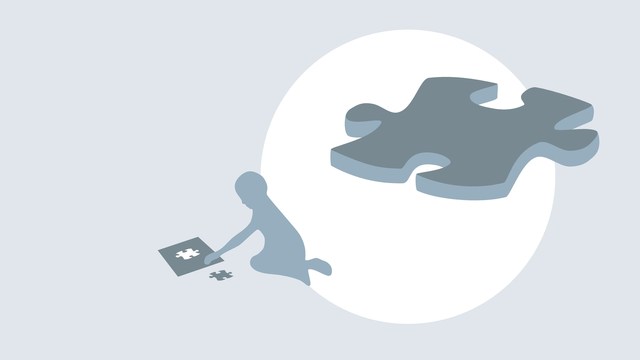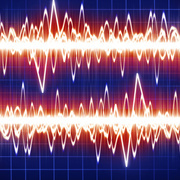When a patient has a seizure, the electrical activity in her brain is disrupted. The Merck Manual Home Edition states that about two percent of adults have a seizure, though two-thirds of them never have another one. Seizures are grouped into two categories: epileptic and non-epileptic. Epileptic seizures occur repeatedly with no cause, while non-epileptic seizures are brought on by another condition. There are different types of seizures which have various symptoms. The majority of patients (70 percent) have only one type of seizure, according to the Manual.
Simple Partial Seizures
The Epilepsy Foundation of New Jersey states that partial seizures, also called focal seizures, are the most common seizures. When a patient has a partial seizure, the abnormal electrical activity occurs on only one hemisphere of the brain. With a simple partial seizure, the patient does not have problems with consciousness or memory. A type of simple partial seizure, Jacksonian seizures have symptoms that start in one area of the body and move to another part.
Complex Partial Seizures
The other type of partial seizure, complex partial seizures, do affect memory and behavior, according to the National Institutes of Health (NIH). Symptoms include staring, not understanding what other people say, smacking lips, moving limbs in strange ways and speaking nonsense.
Generalized Tonic-Clonic Seizures
Unlike partial seizures, generalized seizures have abnormal electrical activity on both hemispheres of the brain. Generalized tonic-clonic seizures, also called grand-mal seizures, are the type of seizure that people associate with epilepsy, according to the NIH. Each episode lasts between one to two minutes. Symptoms of generalized tonic-clonic seizures are drooling, falling, tongue biting and severe muscle spasms.
Absence Seizures
Petit mal seizures, also called absence seizures, are most common in people under age 20, according to the NIH. The hallmark symptom is a staring episode, which lasts for 15 seconds. The seizure can start without any warning signs.
Atonic Seizures
Another type of seizure, atonic seizures are found mainly in children, according to the Merck Manual Home Edition. While short, this type of seizure causes the patient to fall and lose consciousness.
Tonic Seizures
Tonic seizures occur mainly when the patient is asleep, and last between 10 and 15 seconds. The patient's muscles stiffen during an episode, and if she is standing, the patient may fall.
Myoclonic Seizures
When a patient has a myoclonic seizure, she has “quick jerks of one or several limbs or the trunk,” according to the Merck Manual Home Edition. While the patient does not lose consciousness, multiple myoclonic seizures may lead to tonic-clonic seizures.
Status Epilepticus
The most serious seizure disorder, status epilepticus is diagnosed when the patient has a seizure that lasts more than five minutes or the patient does not regain her consciousness in between seizures, according to the Merck Manual Home Edition. This type of seizure causes severe problems, such as breathing problems and increased body temperature. Untreated status epilepticus may result in death.
Febrile Seizures
Triggered by a fever, about three to five percent of children between nine months and five years old have this type of seizure, according to the NIH. Symptoms include limb stiffening, rolling of the eyes, crying from the muscle contractions, vomiting and breathing problems.
----------------------------------------------------------------------------------------------------------------------------
Elizabeth Stannard Gromisch received her bachelor’s of science degree in neuroscience from Trinity College in Hartford, CT in May 2009. She is the Hartford Women's Health Examiner and she writes about abuse on Suite 101.






Add a Comment1 Comments
Everyone with epilepsy has different types/kinds of seizures.you cannot base everything on 1 or 2 people. someone that has a grandmal seizure once or twice in their life,does not have epilepsy.people with reacurring seizures have epilepsy. with epilepsy,you normally have an "aura" when you have a feeling/sign/light/ to tell you it is getting ready to happen. always the same. there are many things that can bring on a seizure. mainly flashing/fast moving/rotating things in repatition. also,there are many,many fast moving commercials that can cause seizures if: watched to closely, to much. doing things in repatition will cause tiredness,brain strain,anxiety,stress, leading up to a seizure. Example: for me, I worked allday, testing 3-5 year olds on physical/mental problems. having them catch bean bags, do puzzles, hop on 1 foot, etc.saying the same things over, over, to explain everything to them.after the testing, I went back to my desk. I knew something was wrong, but I didn't know what. I hadn't had a seizure in 7 yrs. I had forgotten all about them. I went home, laid on the couch, took aspirins, took the next day off, still felt no better. that night I had 2 seizures, 1 after the other.i went to work the next day, it was like I was moving in slow motion and everything was going by fast. I would set stuff down and not know where I put it, etc.. so I went to the local dr. and we descided I should go back on my medication. because I hadn't taken it in 7 yrs. my symptoms are every time a bright light goes off in front of my eyes. as soon as it does, I think and know I am going to have a seizure. when I have one, I stay conscious. the left side of my face/ and my left hand/fingers go numb and start tingling. after maybe 30sec-1minute it stops. after a seizure, things look soo clear! it is like I had been going around with Vaseline in my eyes or in a fog. when this happens, you just want to look at the sky/everything, because you know it will not last forever...that you will go back to the fog. and after the seizure, you feel very tired. I just wanted to make it clear, that no 2 people have the same triggers or seizures. I played a harmonica, (goofing off) for about an hour. not realizing that I was hyperventilating, which leads to a seizure. that is the way the dr. tests you, makes you hyperventilate. I had to go to a breathing test. the woman screams at you the hole time..faster,harder,harder. she would say your not holding it or blowing it hard enough. I started feeling real emotion, I was going to cry. I told her, if I cry, donot pay any attention to me. once again I didn't realize I was hyperventilating . once it was over, I had to sit in a chair for about 30 minutes, it wears your brain down,stressful..she said other people have told me that.i was so out of it, I didn't tell her I had epilepsy. but I will never get another one. I cannot go to the movies or watch a big screen tv. too much movement/in too large of an area. when I switched from a 35-42" I didn't know if I was going to be able to handle it. but I am use to it now. but have to close my eyes on the fast/flashing commercials. one last thing, if you have seizures or epilepsy, do not watch fireworks. if you know what causes them, then you can keep yourself from having them, along with medication.
October 14, 2017 - 11:34pmThis Comment